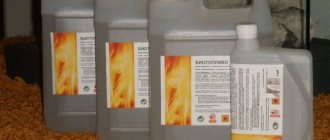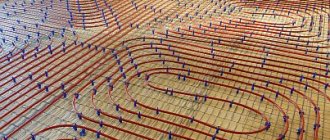Many people probably think that these are technologies of the future. In fact, this has long been the technology of today. And it’s not just that biofuels, as a new and very promising source of energy, are becoming increasingly popularized throughout the world.
In fact, they started talking about it at the beginning of the twentieth century, and during the Second World War they were even actively used in diesel cars. Something else is much more important. The reasons prompting the fuel and energy sector to become more actively involved in the production of alternative fuels are as simple as two: high environmental friendliness, efficiency of use and cost-effectiveness of production.
However, one can argue with the last statement. Intellectual and engineering thought has not yet advanced enough to develop production technologies that are financially more profitable than traditional ones. But there are positive dynamics in this process. We will talk about these examples, as well as modern technologies for producing biofuels in general, in our material.
Where is biofuel used?
In fact, biofuel replaces conventional fuel 100%. It can be used for heating premises (briquettes, pellets, biogas), as fuel for automobile engines (biodiesel), or as another type of fuel. True, in this case, replacement of some mechanisms is necessary. For example, biodiesel is more viscous than regular diesel fuel.
The use of biodiesel as a fuel requires the installation of an engine capable of working with more viscous fuel. Another solution would be to use a mixture of biodiesel and classic diesel. All diesel engines accept this fuel.
Fuel pellets:
Fuel pellets are obtained from wood waste, nut shells, sunflower husks, sawdust, bark and wood chips. At the initial stage of processing, biomass, crushed to flour, enters the dryer, then under the press. Under conditions of high pressure and high-temperature environments, the natural polymer lignin is released, which exhibits adhesive properties. The output is fuel cylinders with a minimum percentage of ash content (no more than 3%).
What technology is used to produce biofuels?
First of all, it should be noted that there are solid, liquid and gaseous biological fuels. For the production of solid biofuel (briquettes and pellets), agricultural plant waste (sunflower stalks, corn leaves, straw...), waste from the wood processing industry (chips, sawdust, bark...), and other plant waste are used.
At the first stage, the raw materials are crushed. Then it is dried and pressed into blocks (in the form of a cylinder or parallelepiped). To produce liquid biofuel, special industrial crops (most often rapeseed) are used.
Initially, the raw materials are pressed to obtain vegetable oil. Then a chemical reaction occurs with monohydric alcohols, resulting in biodiesel.
Almost any waste of animal and plant origin is suitable for the production of biogas. The raw materials are placed in a sealed container and filled with water. During the fermentation process, gas with a high content of methane is released.
Making briquettes
Setting up the production of biofuel from sawdust, straw and other waste at home is somewhat easier. The only equipment you will need is a hand press made specifically for this purpose. It can be purchased ready-made, ordered from craftsmen, or, if you have the appropriate skills, made yourself. A factory-ready press costs a lot of money, so the last option will cost you the least.
The production of briquettes begins with the preparation of the mixture. Sawdust, seed husks, straw and even soaked waste paper are used as raw materials. Of course, such fuel can burn wonderfully in a stove or solid fuel boiler, but due to the low bulk density, the firebox will have to be loaded too often. Ready-made solid biofuel made from straw or sawdust will burn much longer.
The mixture consists of raw materials, water and clay, which serves as a binder. Straw or paper must first be crushed, then mixed with clay in a ratio of 10:1 (1 kg of clay per 10 kg of waste) and water. The amount of water must be selected so as to ensure uniform mixing and the ability of the mixture to be molded. You should not add a lot of clay to the solution; do not forget that it will remain in your boiler in the form of ash.
A special form is filled with the mixture, then it is placed under a press. After pressing, the finished briquette is carefully removed and laid out to dry in the sun. You can see the pressing operation in the video:
Solid biofuels
We find a supplier of raw materials. This could be a sawmill owner who has a lot of production residues (shavings, chips, sawdust), or a large farmer who would be happy to get rid of plant stems and leaves. The main thing is to ensure a constant source of raw materials for your production.
We are preparing a production facility away from residential premises (production is quite noisy), and a dry storage area. We purchase equipment (raw material grinder, dryer and pressing and slicing machine). It's not cheap! But it will quickly pay off if you produce briquettes not only for your own needs, but also for sale.
We find potential buyers (neighbors, acquaintances or small businesses). This will help not only provide heating for your home, but also make a good financial profit.
Bio-based liquid fuels
We plant large areas of rapeseed, sunflower or soybeans. These are raw materials necessary for production.
We prepare a room for fuel production (large and well-ventilated) and a storage area. We purchase equipment. A press for squeezing oil, storage containers (not metal!), filters for purifying oil from impurities. You will also need methanol and sodium hydroxide.
Be careful! To produce high-quality fuel, it is necessary to observe all proportions during production.
We find buyers. Biodiesel fuel is well suited for low-maintenance tractor engines. Try to conclude a contract with a tractor brigade or a large agricultural enterprise.
Biohydrogen:
Biohydrogen is a gaseous product obtained from biomass by biochemical or thermochemical methods.
With the biochemical method of exposure, the process of biomass breakdown is initiated by special bacteria. In the thermochemical method, biomass is heated to 800°C without access to oxygen. During the reaction, H2, CO and CH4 are released from the biomass.
Hydrogen can also be produced from sewage or seawater by certain species of green algae (for example, Chlamydomonas reinhardtii).
On an industrial scale, the use of hydrogen is limited, since when it interacts with air, an explosive mixture is formed, which is extremely explosive.
Biogas production at home
- We dig a hole for the tank. The walls of the tank can be made of any material, the main thing is that it is airtight. The volume of the tank depends on your needs (from one kilogram of biological waste, half a kilogram of biogas is released).
- We fill the tank with bio waste (plant and animal waste), fill it with water and seal it with a lid (not forgetting to make a channel through which the gas will enter the storage container.
- Through a metal pipe we connect the biowaste fermentation tank to the storage container.
- We connect the system to a gas boiler for heating. Don't forget about pressure regulators. It is better to entrust this stage to a specialist! Improper operation of the system may result in gas leakage and explosion.
Preparation of charcoal
Charcoal is of interest to homeowners as a fuel used in home grills and barbecues. It is no secret that buying such coal in a store is quite expensive, while at home you can burn it for free, just by spending your time. By the way, it makes no sense to burn it in solid fuel boilers or stoves; it is much easier to put ordinary firewood in the firebox.
Charcoal is burned from wood in 2 ways:
- in barrels;
- in the pits.
The first method requires an ordinary 200 liter steel barrel and a household vacuum cleaner. The latter will serve to pump air, so a pipe must be cut into the bottom of the barrel to connect it. Light a fire at the bottom of the container, then fill it halfway with wood and turn on the vacuum cleaner. Then the wood is piled up to the top, covered with a lid and covered with clay. When everything has burned down and the barrel has cooled, sorting is done to separate the charcoal from the ash.
In a similar way, wood is burned in a pit. The latter is dug 0.8 m in diameter and no more than 0.6 m in depth. The bottom of the pit is compacted, after which a fire is built in it and firewood up to 30 cm long is laid in layers. Filling occurs as the previous layer is burned, the process lasts about 3 hours. At the end, the pit is covered with branches and moss, and sprinkled with earth on top. After 2 days, the coating can be removed and the coals removed.











